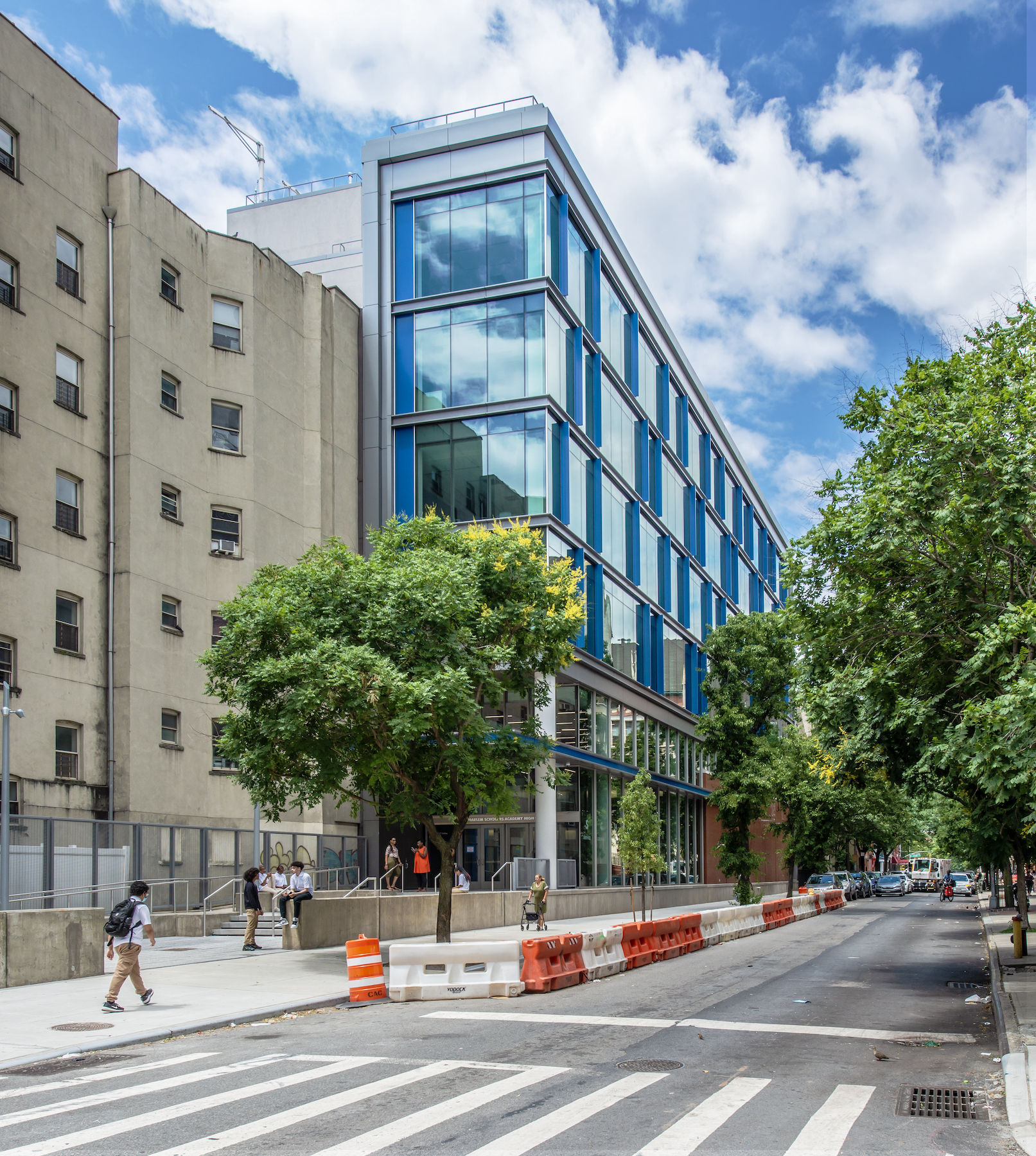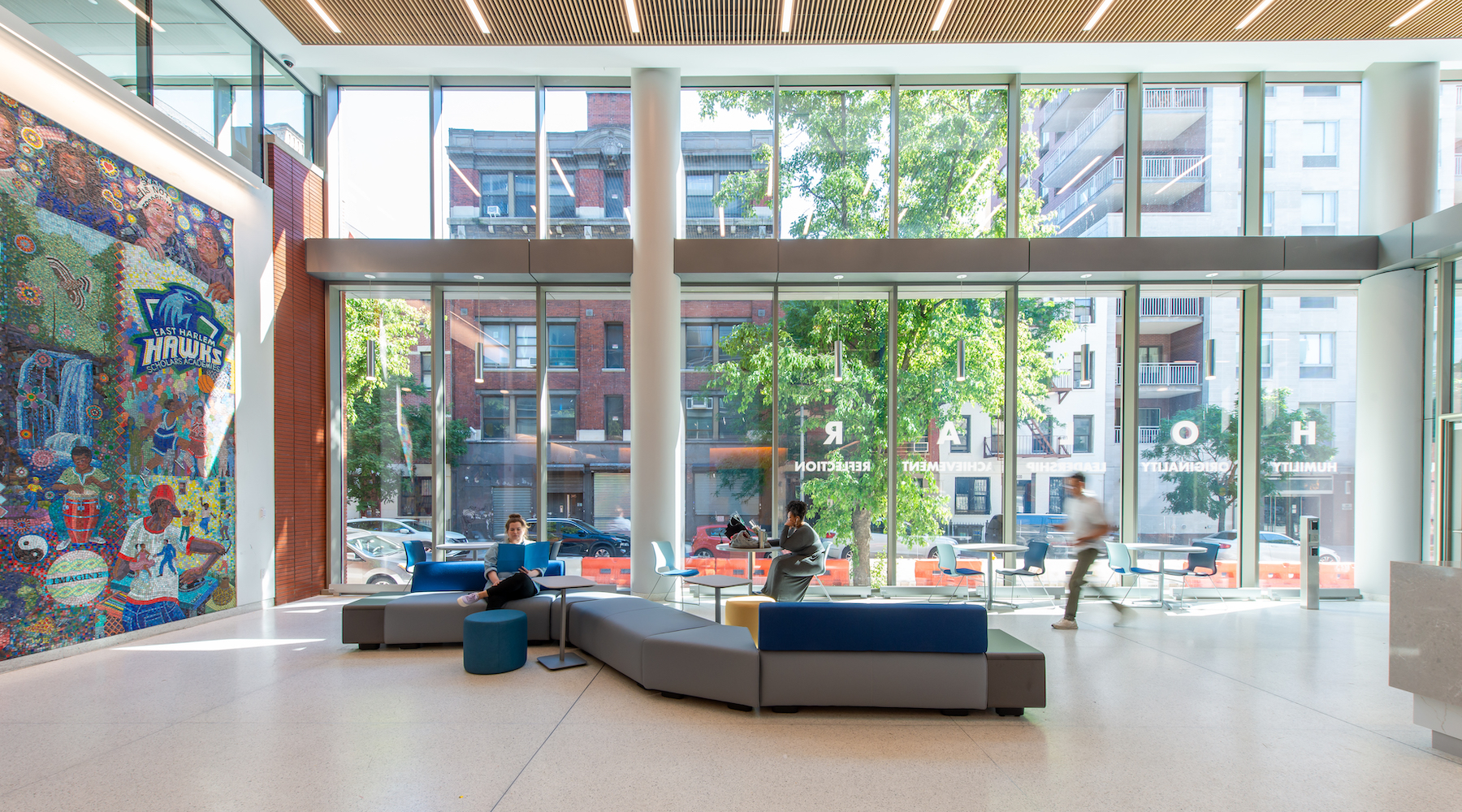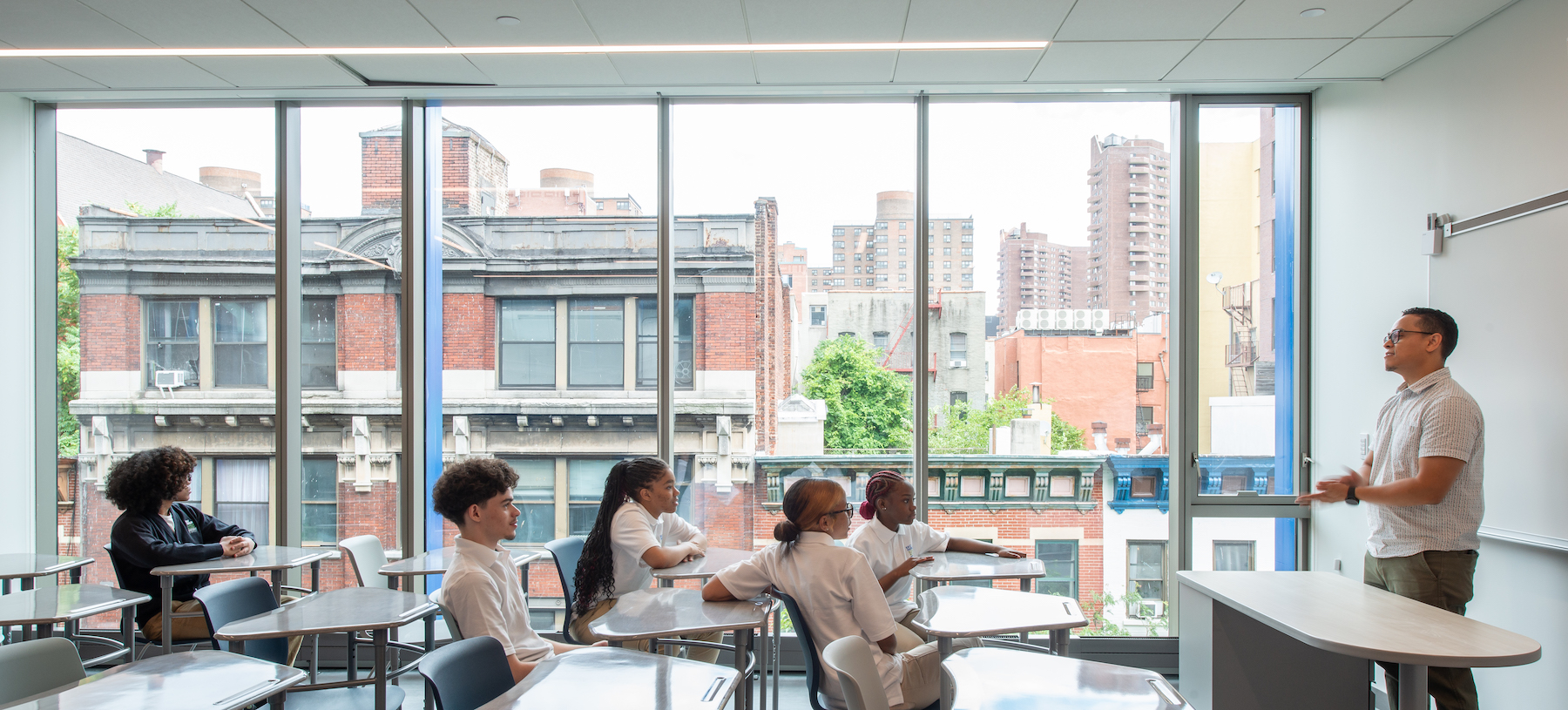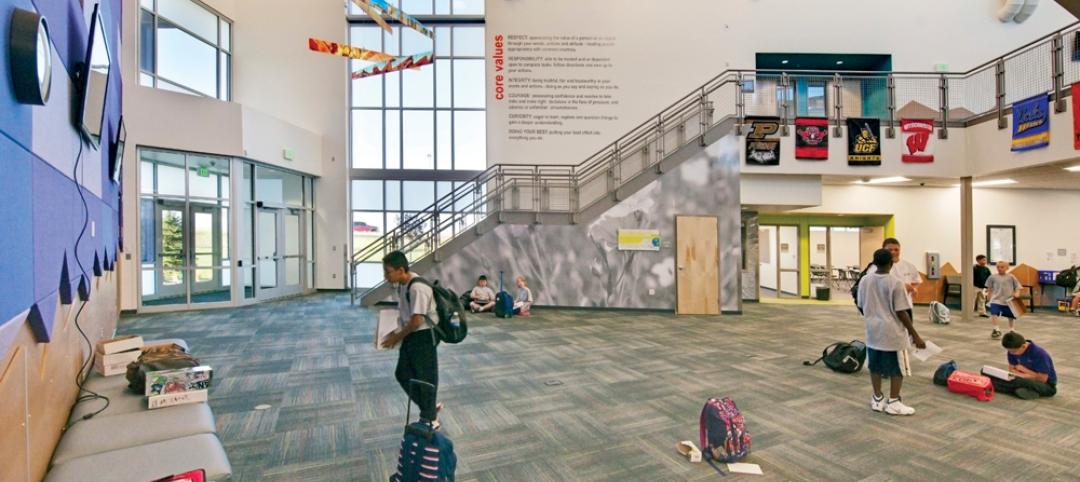New York City’s first new public high school in 60 years opened to students on September 19.
Designed by Ennead Architects, East Harlem Scholars Academy High School aligns with the East Harlem Tutorial Program’s (EHTP) goal to familiarize its students with a collegiate-like environment in preparation for their future academic transition.
“We hope this serves as a model for future public schools throughout the city for years to come,” said Steven Chu, a design partner at Ennead, in a prepared statement.
High school encourages study and research

The 70,000-sf building provides students with spaces needed to support a flexible, enhanced academic schedule, and to accommodate programming across all EHTP schools. The building’s six stories include 25 classrooms, an art and music room, and fully equipped labs for biology, chemistry, and physics.
The school also features a college access suite that encourages study and research, and provides college counseling, SAT and Regents test prep, and EHTP’s flagship College Mentoring Program. The building’s design includes break-out and small-group study areas.
To fit the needs of all students, including those who are neurodivergent, the design team incorporated special lighting and sound, as well as ample acoustical absorption within the walls of the school’s lobby and cafeteria. The design of the classrooms and stairwells lets in natural light and takes into account visibility to reinforce openness and transparency.
School features sustainable design

The school’s amenities include a full-sized gym, a Black Box Theater, and cafeteria, with an eye toward making the school a community hub. To the right of the cafeteria is a backyard terrace. And the building’s glass façade offers generous views of the city.
Sustainability is also on display. To mitigate the effects of flooding, the high school, located on 104th Street and First Avenue, is in a designated flood zone. The lobby is lifted three feet above ground level. And a blue roof captures stormwater for easier drainage.
East Harlem Scholars Academy High School consolidates the 9th, 10th, and 11th grades, which had been operating out of temporary buildings at 96th and 106th streets on Second Avenue. The new school serves 326 students, 67% of whom are Hispanic, and 28% are Black.
Related Stories
| Oct 26, 2014
Study asks: Do green schools improve student performance?
A study by DLR Group and Colorado State University attempts to quantify the student performance benefits of green schools.
| Oct 21, 2014
Check out BD+C's GreenZone Environment Education Classroom debuting this week at Greenbuild
At the conclusion of the show, the modular classroom structure will be moved to a permanent location in New Orleans' Lower 9th Ward, where it will serve as a community center and K-12 classroom.
| Oct 16, 2014
Perkins+Will white paper examines alternatives to flame retardant building materials
The white paper includes a list of 193 flame retardants, including 29 discovered in building and household products, 50 found in the indoor environment, and 33 in human blood, milk, and tissues.
| Oct 15, 2014
Harvard launches ‘design-centric’ center for green buildings and cities
The impetus behind Harvard's Center for Green Buildings and Cities is what the design school’s dean, Mohsen Mostafavi, describes as a “rapidly urbanizing global economy,” in which cities are building new structures “on a massive scale.”
| Oct 12, 2014
AIA 2030 commitment: Five years on, are we any closer to net-zero?
This year marks the fifth anniversary of the American Institute of Architects’ effort to have architecture firms voluntarily pledge net-zero energy design for all their buildings by 2030.
| Oct 9, 2014
Regulations, demand will accelerate revenue from zero energy buildings, according to study
A new study by Navigant Research projects that public- and private-sector efforts to lower the carbon footprint of new and renovated commercial and residential structures will boost the annual revenue generated by commercial and residential zero energy buildings over the next 20 years by 122.5%, to $1.4 trillion.
| Sep 24, 2014
Architecture billings see continued strength, led by institutional sector
On the heels of recording its strongest pace of growth since 2007, there continues to be an increasing level of demand for design services signaled in the latest Architecture Billings Index.
| Sep 22, 2014
4 keys to effective post-occupancy evaluations
Perkins+Will's Janice Barnes covers the four steps that designers should take to create POEs that provide design direction and measure design effectiveness.
| Sep 22, 2014
Sound selections: 12 great choices for ceilings and acoustical walls
From metal mesh panels to concealed-suspension ceilings, here's our roundup of the latest acoustical ceiling and wall products.
| Sep 17, 2014
New hub on campus: Where learning is headed and what it means for the college campus
It seems that the most recent buildings to pop up on college campuses are trying to do more than just support academics. They are acting as hubs for all sorts of on-campus activities, writes Gensler's David Broz.
















